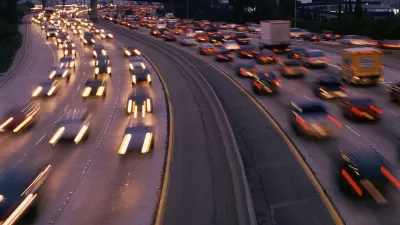Unlike the more limited Oregon and California road usage charge programs currently in operation, Hawaii's program envisions over one million motorists participating in the demonstration program.

The Hawaii Department of Transportation (HDOT), in partnership with the counties of the state of Hawaii (County of Kauai, City and County of Honolulu, County of Maui, and County of Hawaii), received nearly $4 million, the largest of eight grants [see list in Sept. 6 post on the eight projects] awarded by the Federal Highway Administration on August 30 under its Surface Transportation System Funding Alternative Program.
"Although representing a small state, HDOT proposes to directly measure road use and provide prototypical billings and direct communications about the objectives of this program to over 1 million motorists across all four counties of the state," according to the 'project description' of the Hawaii Road Usage Charge Demonstration [PDF].
"The department said a tax on motor fuels now provides 33 percent of State Highway Fund revenue, but the demonstration project will test whether mileage-based fees could provide a sustainable source of funding to maintain and build Hawaii roadways," reports AASHTO Journal.
[HDOT's Highway Division] said its pilot program will build on an existing system in which Hawaii records odometer readings annually on all vehicles as part of their yearly registration inspections
Hawaii sees mileage fees, more specifically, the road usage charge (the term also used by OReGO) as a possible replacement for the gas tax because it aligns with its energy and environment goals of weaning off fossil fuels while allowing HDOT to maintain its road network."
From project description:
Transitioning Hawaii’s ground transportation vehicles from internal combustion engines to high miles per gallon (MPG) and alternative fuel vehicles is an important strategy for supporting Hawaii’s statewide energy policy goals, which include reduction or elimination of fossil fuel use. Changing the structure of transportation funding, to ensure that system maintenance and energy policy are aligned, is integral to achieving the State’s goals.
"The first demonstration activities will launch in the first half of 2017 with manual reporting and feature continuous feedback from motorists over 18 months," according to the grant application description.
HDOT is a member of the Western Road Usage Charge Consortium. Project Manager Gerald Dang has participated in WRUCC since March 2014.
Related Planetizen coverage:
-
Over $14 Million Awarded to Eight Projects to Find Alternatives to Gas Taxes, September 6, 2016
FULL STORY: Hawaii DOT Details Plans for Largest U.S. Test of Mileage-Based Road User Charge

Alabama: Trump Terminates Settlements for Black Communities Harmed By Raw Sewage
Trump deemed the landmark civil rights agreement “illegal DEI and environmental justice policy.”

Study: Maui’s Plan to Convert Vacation Rentals to Long-Term Housing Could Cause Nearly $1 Billion Economic Loss
The plan would reduce visitor accommodation by 25% resulting in 1,900 jobs lost.

Why Should We Subsidize Public Transportation?
Many public transit agencies face financial stress due to rising costs, declining fare revenue, and declining subsidies. Transit advocates must provide a strong business case for increasing public transit funding.

Wind Energy on the Rise Despite Federal Policy Reversal
The Trump administration is revoking federal support for renewable energy, but demand for new projects continues unabated.

Passengers Flock to Caltrain After Electrification
The new electric trains are running faster and more reliably, leading to strong ridership growth on the Bay Area rail system.

Texas Churches Rally Behind ‘Yes in God’s Back Yard’ Legislation
Religious leaders want the state to reduce zoning regulations to streamline leasing church-owned land to housing developers.
Urban Design for Planners 1: Software Tools
This six-course series explores essential urban design concepts using open source software and equips planners with the tools they need to participate fully in the urban design process.
Planning for Universal Design
Learn the tools for implementing Universal Design in planning regulations.
Caltrans
Smith Gee Studio
Institute for Housing and Urban Development Studies (IHS)
City of Grandview
Harvard GSD Executive Education
Toledo-Lucas County Plan Commissions
Salt Lake City
NYU Wagner Graduate School of Public Service




























